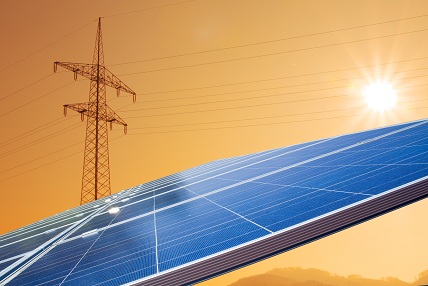Solar Power – Investing in sunlight

Related topics
Energy Innovation European Research infrastructures, incl. e-infrastructures Access to risk finance Secure, clean and efficient energy Germany Spaindate: 03/07/2014
Project: Andasol Solar Power Station
acronym: Andasol
See also: EIB
Contact: http://www.power-technology.com/pro...
A partnership of Spanish and German companies constructed the first large-scale commercial solar thermal power-plant in Europe, Andasol-1, which started operating in the Spanish province of Granada in December 2008. The power-plant uses an innovative method of concentrating the sun's rays to produce heat that is then converted into electricity. The solar power technology successfully demonstrated in Andasol-1 led to the construction of Andasol-2 and attracted financial support for several other innovative power-plants. The technology is also being exported worldwide by the companies that developed it.
Andasol-1 consists of many rows, each several hundred metres long, of precisely aligned troughs with a parabolic cross-section. These act as mirrors to focus sunlight on pipes carrying a fluid that is heated to around 400°C. The pipes convey the fluid to a steam turbine where the heat is converted into electricity. The plant covers the equivalent of 210 football pitches (1.5 million square metres) and can potentially produce an average 150 gigawatt-hours of electricity a year. At full capacity, it can supply up to 40 000 households with reliable and environmentally friendly power. Production even continues after sunset or when it rains, as an innovative heat-storage technology, using molten salt, stores heat when the sun is shining and releases it gradually during the night.
With innovative technologies, the Andasol project has raised operating efficiencies, reduced generating costs, and hence encouraged the wider take-up of the design and technologies involved. It helps the EU to meet its targets to generate energy from renewable sources and hence combating climate change. It has also introduced new technologies into the market, created new market opportunities, and given rise to new commercial activities.
The EU invested €120 million in the form of a loan under the EU's Risk-Sharing Finance Facility (RSFF). The RSFF is supported by contributions from the FP7 and funds from the European Investment Bank (EIB). The RSFF provides loans that bear interest and must be repaid: no grants or subsidies are involved. Loan repayments are used to fund further RSFF loans. Many of the power-plants built following the success of the Andasol-1 demonstrator have been funded by private sector sources, showing the leverage effect of the original RSFF investment.
The Andasol project addressed a challenge clearly shared by all Member States: combating climate change. Developing the innovative technologies required the pooling of complementary knowledge and skills that could not have been provided by teams from a single Member State. This collaboration also lowered the risks related to research and innovation. The use of an RSFF loan reduced the commercial risk to the partners and induced them to invest more of their own funds than they would have done otherwise or under national or regional funding schemes.
